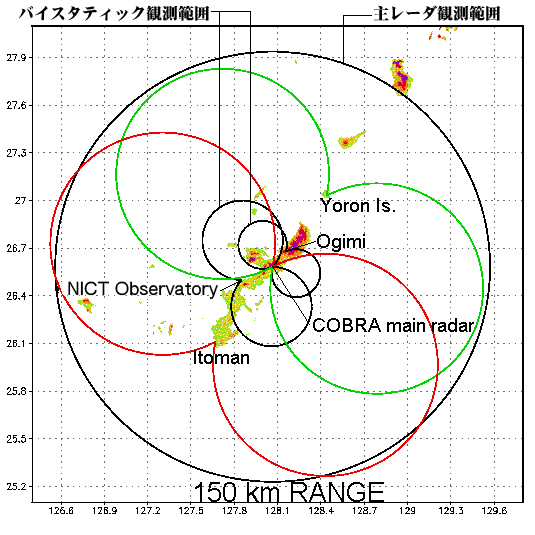
Area of Bistatic Radar Network Observation
The solid black outer circle indicates the 150-km observation range of the main radar. The black lines on the inside represent the observable ranges for the bistatic Doppler radars that can be deployed at present. The green and red lines indicate the areas where bistatic Doppler observations will be possible when bistatic receivers are installed on Yoron Island and Itoman.




|